Custom Coffee Bags
Printing New York’s bespoke custom coffee packaging services can help you stand out from the crowd. With eye-catching artwork and high-quality coffee packaging that not only looks fantastic but also keeps your coffee fresh and tasty, your brand will be impossible to miss. Our custom coffee bags & coffee packaging will make your product stand out on any shelf, whether it’s ground coffee, whole bean, or roasted.
More coffee is sold when it comes in attractive packaging. If you’re a coffee drinker like us, you’re aware that coffee bags come in a variety of shapes, sizes, and colors. You also realize that, given the variety of coffee styles, flavors, and price points available, this is a beverage deserving of attractive packaging. Our goal is to assist you in increasing your coffee sales. We’re making custom printed coffee packaging viable for small and medium roasters to compete with the big players, thanks to new packaging alternatives like biodegradable bags and amazing new printing technology enhancements like digital printing which allows us to cut minimum quantities down and still retain high quality packaging prints. Need some assistance figuring out what to look for in your coffee packaging? Talk to one of our experts today about your brand and packaging requirements.
Coffee Pouches
Coffee pouches, also known as stand up pouches, are a long-time favorite coffee bag. They feature an appealing, stable design and strike a balance between cost and quality. Additionally, a large opening at the top of the bag facilitates filling it with roasted or green coffee beans quick and easy.
Tear notches, transparent windows, and eye-catching labels, together with high-barrier protection, allow a wide range of branding opportunities. There are choices that are biodegradable, compostable, and recyclable.
There are many various types of coffee beans, roasting styles, and forms in which coffee is sold, just as there are many different types of coffee beans, roasting styles, and forms in which coffee is sold. In the ever-changing world of selling coffee, there are a variety of packaging possibilities. The following are some of the coffee packaging options we sell at Printing New York:
Materials: Material options range from materials with a good shelf life to compostable coffee packaging.
Packaging: Square bottoms, flat bottoms, quad seals, stand up pouches, and flat pouches are all possible configurations.
Pack Features: Degassing valves, tamper-evident qualities, tin-ties, zippers, and pocket zippers are among the features.
Coffee Bag Printing
Most clients know what kind of design, size, and features they want based on variables like storage, shipping, and the selling environment, as well as whether the coffee is being packaged for retail or industrial customers. With every coffee bag printing project, there are a lot of variables, and customers frequently ask for assistance in deciding on a printing option and the quantity of personalized coffee bags they can afford. If you’ve decided on a configuration, here are some basic recommendations and an overview of some of the possible coffee packing alternatives.
Side Gussetted Bags
Coffee bags with side gussets have become another popular coffee packaging option. It’s less expensive than flat-bottom coffee container, yet it still keeps its shape and can stand on its own. It can also support greater weight than a bag with a flat bottom.
Quad Seal Bags
Our quad seal pouches are perfect for your coffee. Due of the additional branding space, the gusseted bag is a popular coffee packaging design. Gusseted sides hold extra coffee and, like our other stand-up coffee pouches, look excellent on a shelf.
8-Seal Square Bottom Bags
The flat bottom coffee bag, also known as block bottom coffee bags, is a classic design that has been around for a long time. When the top is folded down, it stands alone and provides a traditional brick shape. This arrangement has the disadvantage of being less cost-effective in lesser numbers.
Stand up Pouches
Coffee bags that stand up are a “new school” design. They are less expensive than the other two options and have a number of advantages. It can stand alone, and most consumers are accustomed with the shape, but it also allows for the use of an insert zipper, making it simple to fill. The user can also keep their clothes fresh by using the zipper.
Flat Lay / Stick Pack
Single serving coffee bags come in stick packs or flat bags. This form of packaging can be made in a variety of ways, including flow tubing or lie flat pouches. Only use tubing if you have a form and fill machine. Stick Packs and Lay Flats are designed for filling at a slower pace. This container is ideal for sample coffee bags.
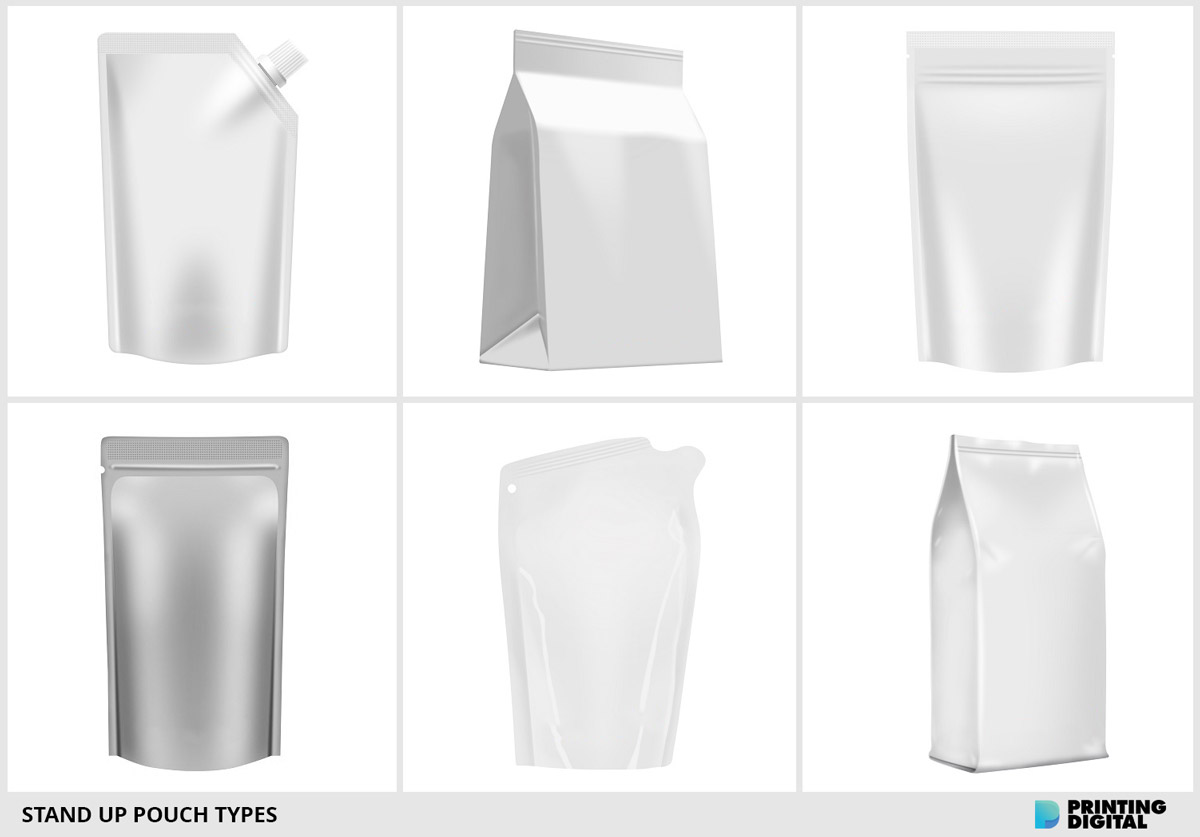
What materials can you print coffee packaging in?
As one of the top coffee packaging manufacturers, we offer the best materials for your coffee packaging requirements. All of our coffee bags are made using industrial-strength techniques. The following is a typical coffee bag material structure:
PET/AL/PE
PET/PE/AL/NY
PET/MPET/PE
Kraft Paper/PET/MPET/PE
Kraft Paper/PET/PE
We can also customize materials to meet your specific requirements. We make certain that the bags we use for our custom coffee bags service are made of food-use grade materials.
Should I use coffee packs with valves?
Coffee bags with a valve have a number of advantages. The stand up pouch, gusset bag, or block bottom pouch with a valve are the most common coffee bags with a valve. This type of coffee bag can keep your coffee beans fresh for as long as possible. Freshly roasted coffee, in general, emits carbon dioxide. Coffee bags with valves have a one-way valve that allows gas to escape while preventing air from entering the bag. Coffee bags with valves, as one type of popular coffee bean packaging, provide advantages above standard coffee bean bags.
Advantage: The coffee bag is designed in a unique way to keep the coffee fresh. Coffee bags with valve are a popular type of coffee bean packaging because they keep coffee beans fresh for a long time.
Many different types of coffee bags are compatible. Stand-up pouches, flat-bottom pouches, and gusset bags can all benefit from the valve. You may use any sort of coffee bag you like and add a valve to keep it fresh.
This is a type of custom coffee bag that may be made to fit your specific needs. This type of coffee bag allows clients to create their own coffee bag, which may then be printed according to your specifications.
Printing New York offers a unique printing service for bespoke coffee bags. We specialize in the packaging of coffee bags. We strive to provide the greatest coffee bean packaging service for our customers by creating elegant coffee bags, selecting safe materials, and maintaining a close relationship with them.
Coffee packaging comes in a variety of styles and materials. Direct packing is simple to create package damage since coffee naturally emits carbon dioxide after roasting, and long-term contact to the air causes aroma loss, oxidation of oil and aromatic components in coffee, and a reduction in the quality of finished products. As a result, coffee packaging is quite a significant part of the selling process.
What are the different types of coffee packaging?
Coffee bags are often classified into the following categories:
Non-airtight flexible packaging:
This is the most cost-effective option. Small local bakeries typically employ it because it ensures prompt delivery. Coffee beans can be consumed in a reasonable amount of time. Coffee beans can only be preserved in this manner for a short period of time.
After filling the coffee, vacuum and seal it to keep it airtight. The packing can only be packaged after the coffee has been degassed for a period of time due to the creation of carbon dioxide during the roasting process, hence there is a storage gap of several days. Coffee beans can be stored for a longer period of time than coffee powder. Because it is not isolated from the air during storage, the cost is inexpensive. In this manner, coffee should be consumed in ten weeks.
Packaging for one-way exhaust valves:
Roasted coffee is placed in a one-way exhaust valve. This vent valve allows gas to escape but not inside the room. There is no need for a separate storage stage, but because to the outgassing process, the aroma will be partly lost. It prevents the development of rotting flavor, but it does not prevent the loss of scent.
Pressure Packing:
The most expensive method is pressure packing, which can store coffee for two years. The coffee can be vacuum sealed after a few minutes of roasting. Maintain the right pressure in the package after introducing some inert gas. The coffee beans are maintained under pressure, allowing the scent to pour onto the fat, enhancing the beverage’s flavor.
Why should I use custom coffee packaging?
Coffee Bags Keep Your Coffee Safe
The first job of your bags is to keep your coffee safe. Protecting your coffee, whether it’s whole bean, flavored, or ground, is essential. Many businesses believe that adopting a foil laminated film structure provides the best protection. To be honest, this is a throwback. While every printed packaging should be comprised of laminated film of some form, aluminum foil isn’t always the ideal option. Foil, like the foil we use at home, isn’t extremely strong, but it has great barrier characteristics when laminated to other films. The issue with foil is that it is often pricey and difficult to find in stores. This means that once the foil is bent or folded, it does not flex or recoil. This causes permanent creases and lines in the coffee bags, which can eventually lead to weak places and even holes. Consider employing metalized film, also known as Mylar, or a clear film, as recent developments in clear film have resulted in excellent barrier qualities. Remember that clear film can be printed to make it opaque. Foil should be more expensive than metalized and clear film.
Your Brand Is Promoted through Coffee Packaging
Your brand and company must be promoted through printed packaging. Often, a business will begin by using standard coffee bags or even stock stand-up pouches and applying a label, but they will quickly find that nothing beats custom printing. The vibrant colors, the available space or “real estate” to inform the world where your beans are harvested, the lengths you go to safeguard the flavor and aroma, your environmental initiatives, and everything else that helps you tell the world why your coffee is the greatest. It’s a proven truth that a printed coffee bag is less expensive than a standard coffee bag with printed and affixed labels. When you consider the cost of a stock coffee bag, the label or labels, and the work required to apply the label (exactly or you’ll have to start over), a printed packaging solution will be less expensive.
Custom packaging increases the likelihood of your product being purchased.
Finally, your printed coffee packaging must entice customers and retailers to try and buy your product! Remember that you only get one chance to create an impression on a store shelf, and if your coffee bags are slouched, not printed nicely, and/or seem unappealing with a crooked label or one with a large air bubble, you may lose a potential customer. Consider whether your coffee bags contain a ziplock, a gas release valve, a tin tie, or even a resealable sticker for ease of entry and exit from the pouch. Consider the type of printed coffee packaging you use: is it a standard quad seal-center fin style, or are you making a statement with something distinctive and different like a stand up pouch, a flat bottom, or even a flexible box bag style?
Need help with this?
Our expert team is always here to help with any customizations you require.
Available 10am-6pm weekdays by phone, email or livechat.
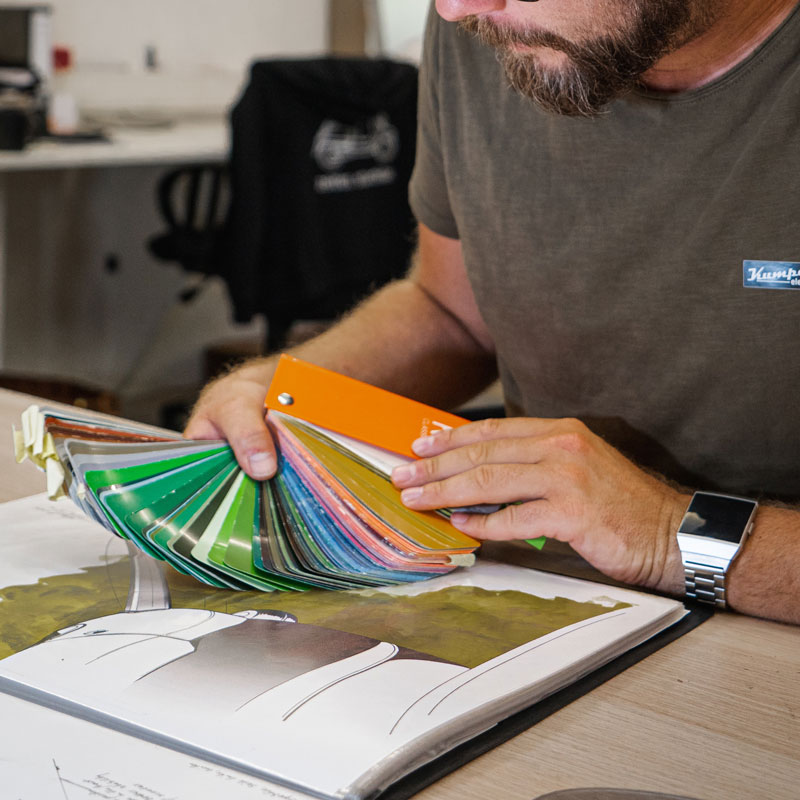
Use CMYK Colors
In offset printing, the standard color mode used in CMYK. When you are creating your files, be sure to check the color mode as programs like Photoshop by default use RBG color, not CMYK.
Accepted File Formats
We require industry standard formats for all uploaded files. We accept the following file formats: TIF – JPG – PDF – EPS – PSD – AI – CDR.
Rich Black vs 100% Black
Large black areas or fonts bigger than 36 points should use Rich Black which stops areas appearing gray. Rich Black is created with 30% Cyan, 30% Magenta, 30% Yellow, 100% Black.
What Paper to Choose?
We offer a wide range of different thickness and texture card stocks. Our text weight is based on pounds and our card stock is weighted by points. Want to feel the difference? Order a Free Sample Kit today.
What is Font Outlining?
We might not have the same fonts on our systems as your computer, so when saving your files in a vector based program (Illustrator, InDesign, Quark, CorelDraw) please outline your fonts.
Coating Types
We have many coating options at Printing New York including Matte, UV, silk and spot UV. UV coating can’t be written on with pen, but Matte can. Ask our team if you have questions on Coating Types.
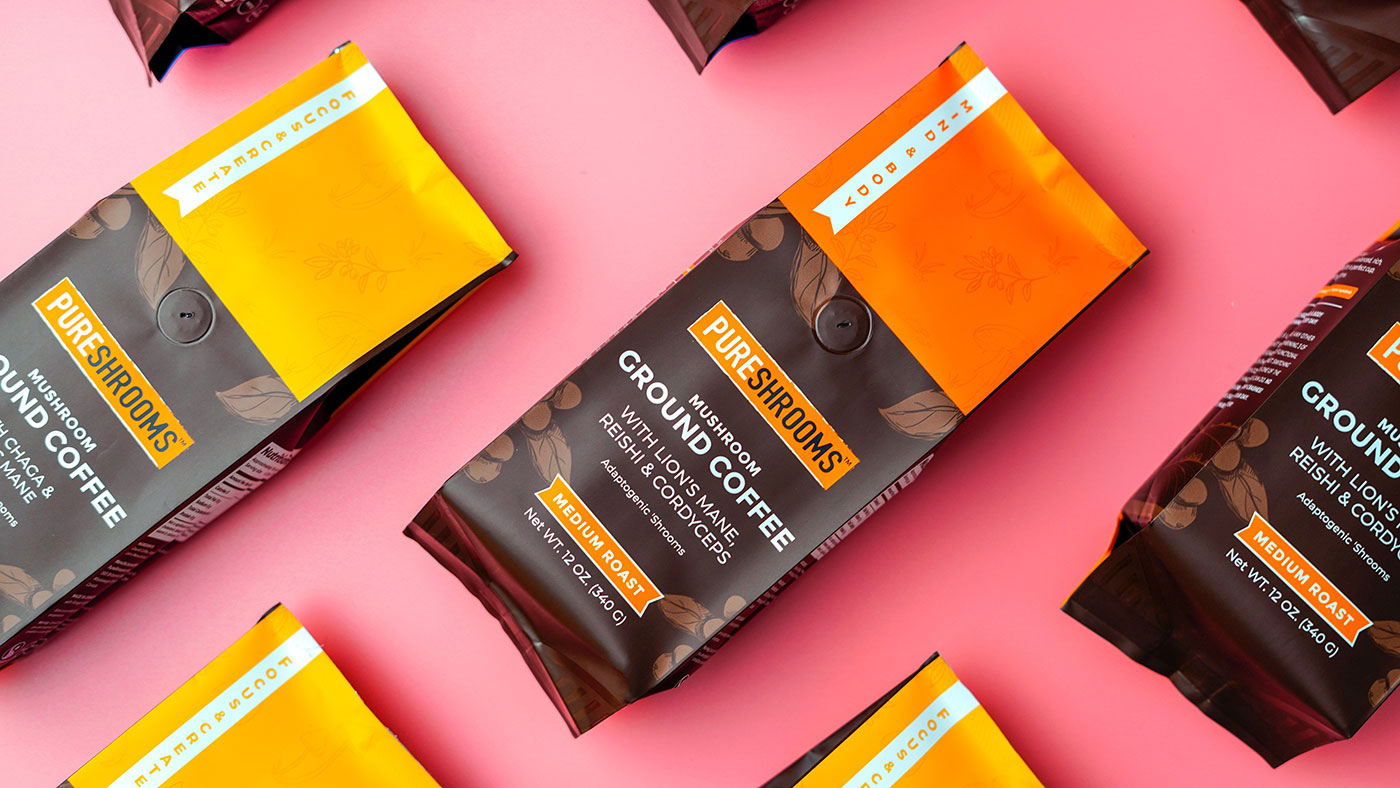

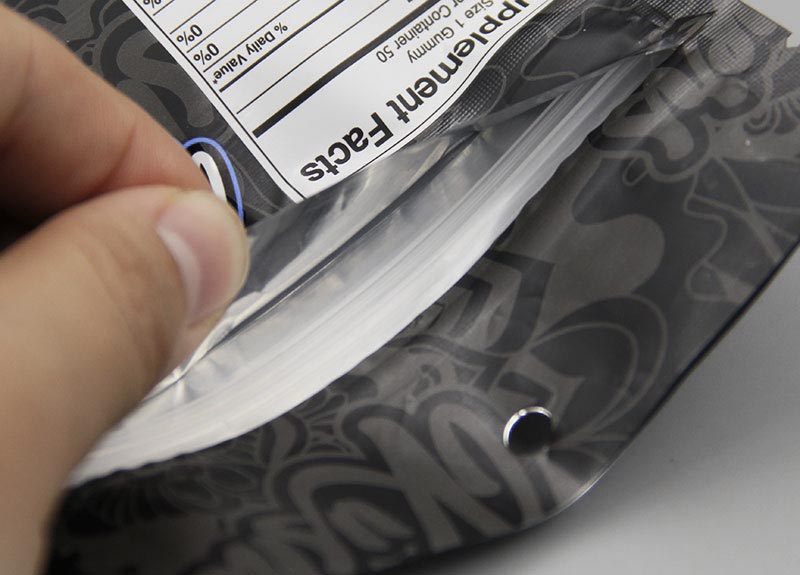
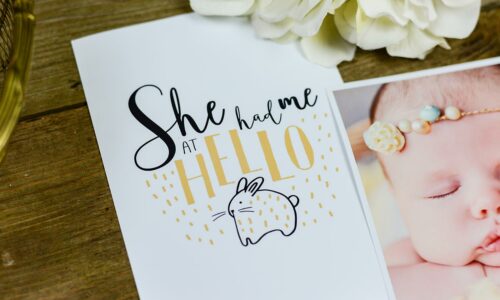
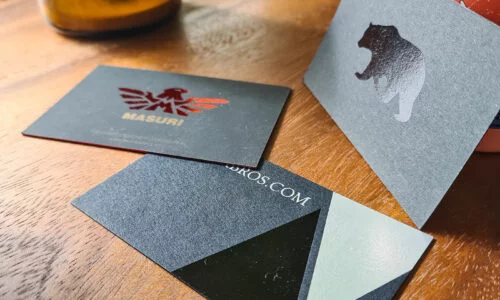
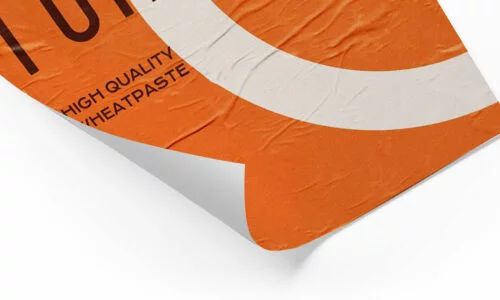
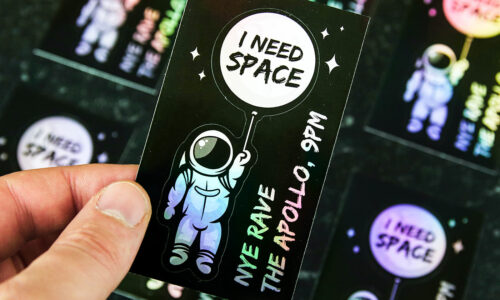

Review Highlights - Coffee Packaging
Powered by YotPo